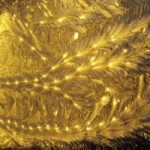Condensation Can Cause Mold Growth

Are your windows starting to look like abstract art during the frigid temperatures of winter? Maybe it looks like someone sprayed them with water and forgot the squeegee.
What you are seeing is the result of condensation; when warm, humid air meets a cold object and freezes or forms water droplets on the surface.
You can stop or minimize condensation by monitoring the amount of water vapor in your home.
As the outdoor temperature drops, the amount of water or humidity in your indoor air needs to be lowered. If you have a central humidifier and you see moisture on the windows, chances are you need to manually adjust the setting.
You should also use exhaust fans in your kitchen and bathrooms. Make sure they expel air outdoors, not into an attic space.
As a leading home inspector in Buffalo, NY and all of Western New York, we have seen the results of too much moisture in a home. Issues range from mold and mildew growth to deteriorated wood and peeling paint.
Indoor plants, aquariums, laundry that is drying indoors, interior painting, cooking, crawl spaces that have no vapor barriers, etc. all can aggravate and contribute to condensation and should be controlled whenever possible.
Older homes can have window condensation issues, but they are not always as bad as those experienced in newer homes. Older homes are often very drafty. The influx of cold air combined with the interior air makes the relative humidity of the air lower. Cold air is dry by nature, and when it is mixed with warm air, the humidity falls as does the dew point!
The bottom line is, simply, if you see excessive moisture on windows, don’t wait until summer comes, be proactive and try to control the moisture now before it creates a bigger problem.


